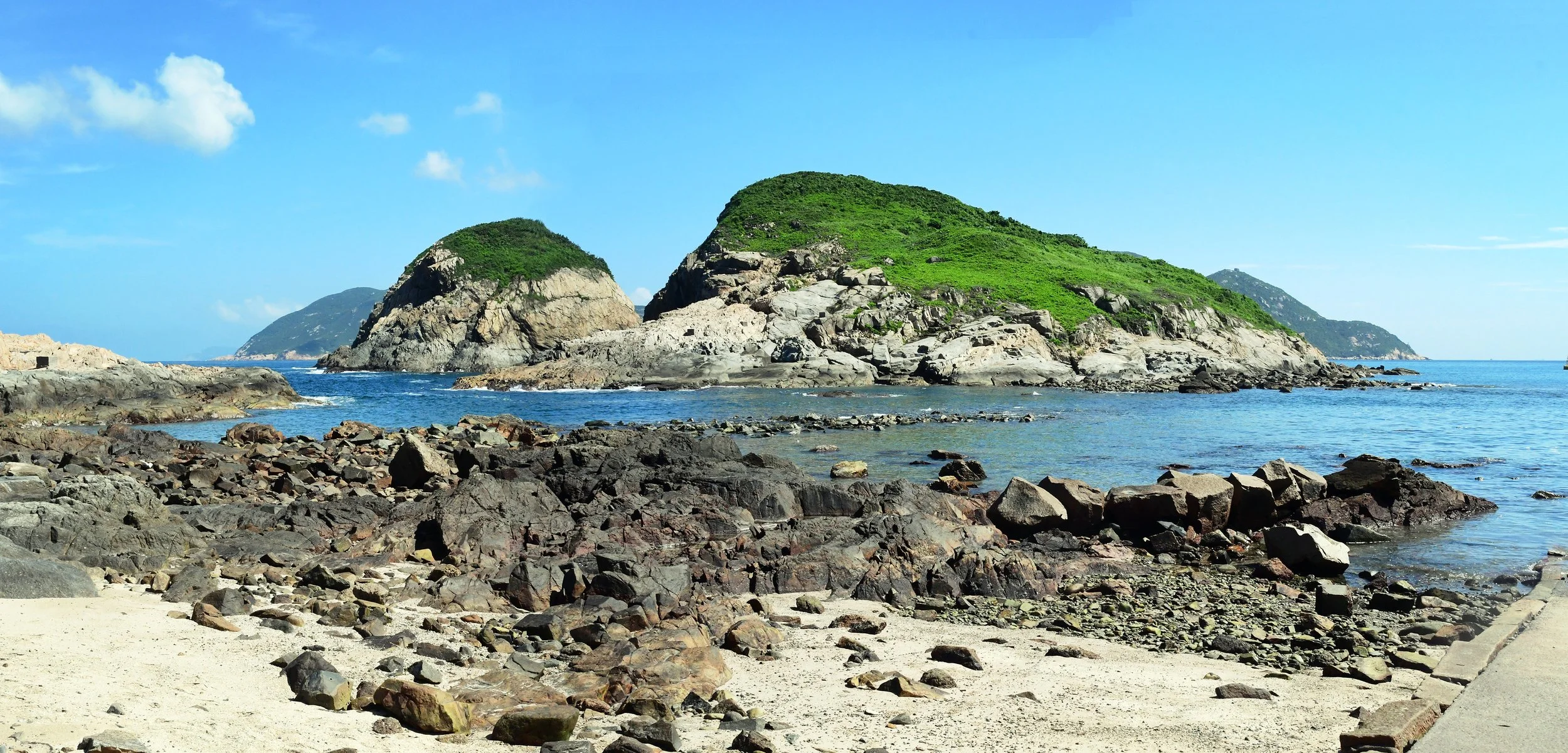In Medias Res: Drama of Stone and Sea
At the southeastern edge of Hong Kong Island, the land ends in a scatter of rock and spray. Cape d’Aguilar, not a whole lot here to attract hashtag-hikers — no loop trail, no fish balls nor crispy beef buns. Just a research facility, an old lighthouse and granite breaking into the South China Sea.
The rock here is old—Jurassic-era granite shaped by volcanic aftershocks. Over time, vertical cracks fill with darker volcanic material, and water has carved the weaker seams into caves and arches. At low tide, the sea steps back and you see who else lives here. The rock surfaces are crowded with barnacles, and limpets, all adapted to the rhythm of the tide. In stiller pools, sea urchins wedge into crevices, and snails trace slow paths across wet granite, feeding on algae.
Near the marine biology facility, a partial skeleton of a fin whale lies on display. The whale washed ashore in the 1950s and was preserved as a specimen for research. Its bones have been bleached by decades of exposure. It doesn’t say much, but it doesn’t have to. Just a reminder that permanence is a myth, and life in the unsettled margins is continuously in process.
What a boring place this is! It takes a moment to readjust our focus, as we start to observe that slow grind of geology. That illusion of stillness is simply movement slowed beyond our usual attention span. The cape isn’t a destination, but a moment in a long, quiet sequence.
NOTE: For the photos below, you can read the captions by mousing over the image or, if on mobile, clicking on the white dot at the bottom right of the screen.























